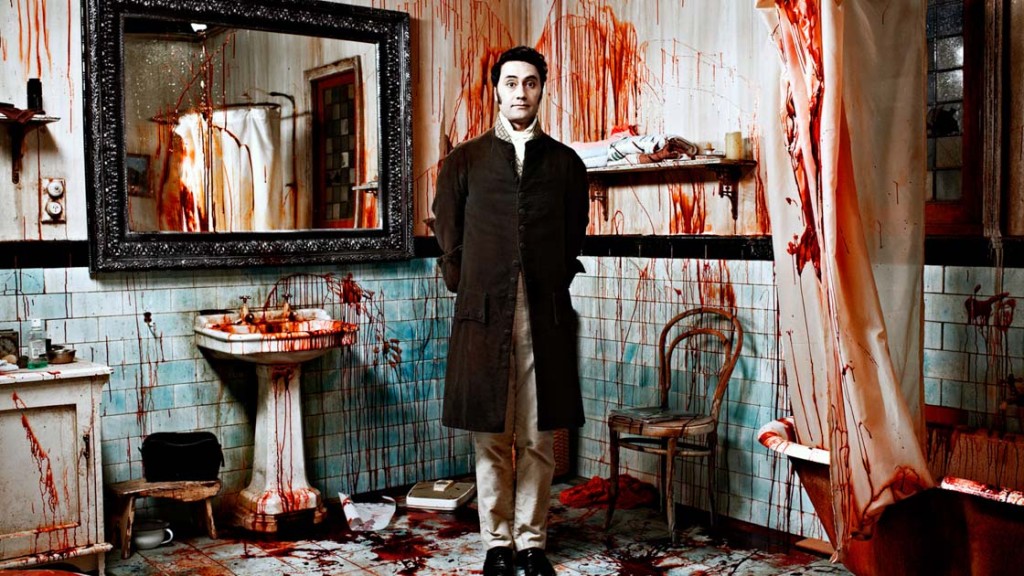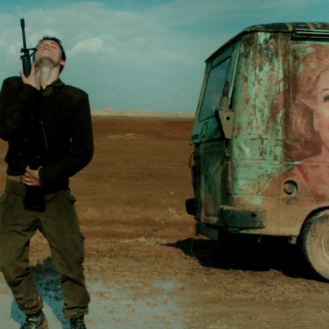By: Addison Wylie
Vampires and the mockumentary genre have both been exhausted thanks to current fads, and spoofing these horrific bloodsuckers has also been done before. Yet, What We Do in the Shadow is one of the funniest films of the year. How so? Filmmaker Taika Waititi and comedic actor Jemaine Clement use inventive intelligence to ingeniously breathe life into these seemingly overplayed areas.
There are various forms of comedy, but it’s always helpful when the filmmakers don’t call attention to what’s funny. I reminisce over the reviews of Roger Ebert, and his theory about comedy. He explained that its amusing when the characters don’t realize what is funny about the scene. That’s utterly true for how Waititi and Clement have approached their film, and why What We Do in the Shdaows is so invigorating.
A documentary crew has been paired up with three strange vampires – Vladislav, Deacon, and Viago. Viago (played by Waititi) is the organized one, Deacon (played by Jonathan Brugh) is the “sexy” one, and Vladslav (played by Clement) is the one with mysterious powers of hypnosis who buries himself in orgies of women when he’s not shapeshifting.
What We Do in the Shadows doesn’t worry about a concrete story. There’s mention about an Unholy Masquerade Ball, but it’s not visited until the last thirty minutes when the filmmakers need to start tying up loose ends. The directorial duo (who also wrote the screenplay) instead turn the film into a light character study that follows classic vampire lore in a modern world. This approach not only works because of how well Waititi, Clement, and Brugh are able to keep a scene moving, but because we’re interested in how these three preposterous characters cope in an ordinary lifestyle.
The vampires hover and stalk the innocent, but they also argue about who isn’t pulling their share of the weight around the house. They’ll bicker, but they’ll also ask for help when getting dressed since mirrors are useless. Again, by subtlety ignoring the fantasy and treating these three like typical roommates, What We Do in the Shadows chooses to work extra hard to get a clever laugh instead of settling for a cheap one.
Even Peter, the Nosferatu-inspired enigmatic roommate who lives in the house’s cellar, is treated like a cooped-up reluctant. The sheepish tenants are afraid to look him in the eye even though they realize he’s one of them, but they also understand that keeping the ghastly creature involved with the house politics is important. Someone’s got to tell Peter about the chore schedule.
The art direction and the make-up effects seep into the background perfectly – a nice contribution to the film’s humbling competence. The filmmakers don’t feel the need to flaunt their strengths. So, when the audience sees a flash of another monster, we all fall into a double-take. When Viago is walking through the halls of the flat, we can’t take our eyes away from the dirty walls and painted portraits.
The film doesn’t feature as much New Zealand quirk as you’d expect from these kiwis, but Waititi and Clement realize there’s a time and place for that sort of humour. Their involvements on TV’s Flight of the Conchords and the film Eagle vs. Shark is evidence of that. They know a different angle must be taken with the easily recognized mockumentary format and these worn-out creatures of the night. Their effort will be rewarded with thunderous laughter from audiences all over the globe.
**********





Leave a comment